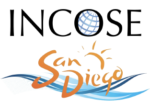Topic: The Internet of Things (IoT) and the explosion of engineering opportunity in what is being called Web 3.0.
Speaker: Darin Andersen, Founder & Chairman of CyberTECH. Darin is also President & CEO of CyberUnited, INC., a cybersecurity and analysis firm focused on big data and predictive analytics.
When: Wednesday, July 16th, 5:10 PM
Where: Giovanni’s Italian Restaurant, 9353 Clairemont Mesa Blvd., SD
About Darin Andersen: Darin Andersen is an Internet of Things and cybersecurity professional and the Founder & Chairman of CyberTECH. Darin is also President & CEO of CyberUnited, INC., a cybersecurity and analysis firm focused on big data and predictive analytics. Before founding CyberUnited, Darin was the General Manager, North America for Norman Data Defense Systems, a global leader and pioneer in proactive security solutions and forensics malware tools. In 2011 Darin received an “Exemplary Performance Award” for Cyber Security by San Diego Business Journal and in 2010 he was named a “Top Influential” by The San Diego Daily Transcript. Darin created the “Securing Our eCity” initiative (now a private Foundation) in his former employer at ESET, where he was Chief Operating Officer. The initiative (which is now an independent Foundation) was recognized by The White House as the “Best Local/Community Plan” DHS National Cybersecurity Awareness Challenge. Darin has an MBA in Finance and Operations Management and 2nd Masters in Information Systems and Operations Systems both from University of Southern California.
Abstract of Presentation:
The Internet of Things (IoT) refers to uniquely identifiable objects and their virtual representations an Internet like structure. The term Internet of Things was proposed by Kevin Ashton in 1999 while he was a student at MIT. The IoT concept has actually be conceptualized since the 1930s with the idea that robots and automation would do the “heavy lifting” in our lives and allow us to focus on more noble pursuits.
According to Gartner, there will be nearly 26 billion devices on the Internet of Things by 2020. ABI Research expects more than 30 billion devices will be wirelessly connected to the Internet of Things (Internet of Everything) by 2020. This concept, where devices connect to the internet/web via low-power radio, is the most active research area in IoT. The low-power radios do not need to use Wi-Fi or Bluetooth. It has been speculated that all IoT devices will use an “IP” address as a unique identifier. Hubs, bridges and other routing type devices make this unnecessary.
In IoT objects contain embedded technology to interact with internal states or the external environment. In other words, when objects can sense and communicate, it changes how and where decisions are made, and who makes them. Tagging things may be achieved through such technologies as near field communication, barcodes, QR Codes etc.
According to a recent survey and study done by Pew Research Internet Project, a large majority of the technology experts and engaged Internet users who responded — 83 percent — agreed with the notion that the Internet/Cloud of Things and embedded and wearable computing will have widespread and beneficial effects by 2025.
IoT is creating unprecedented opportunities for engineers focused on the development of these objects. Existing and new models for development in this space must be developed. Engineers will work with the various business units to develop viable system infrastructures for enabling web-based systems for large sensor networks and will require broad knowledge of existing distributed system and Internet and web-based application architectures, and the ability to creatively invent and customize solutions. Further, Engineers will be required to research and develop distributed system software infrastructure solutions suitable for deployment across a broad range of products in areas such as automotive systems, security technologies, building and thermo technology systems, consumer goods and medical technology applications.
